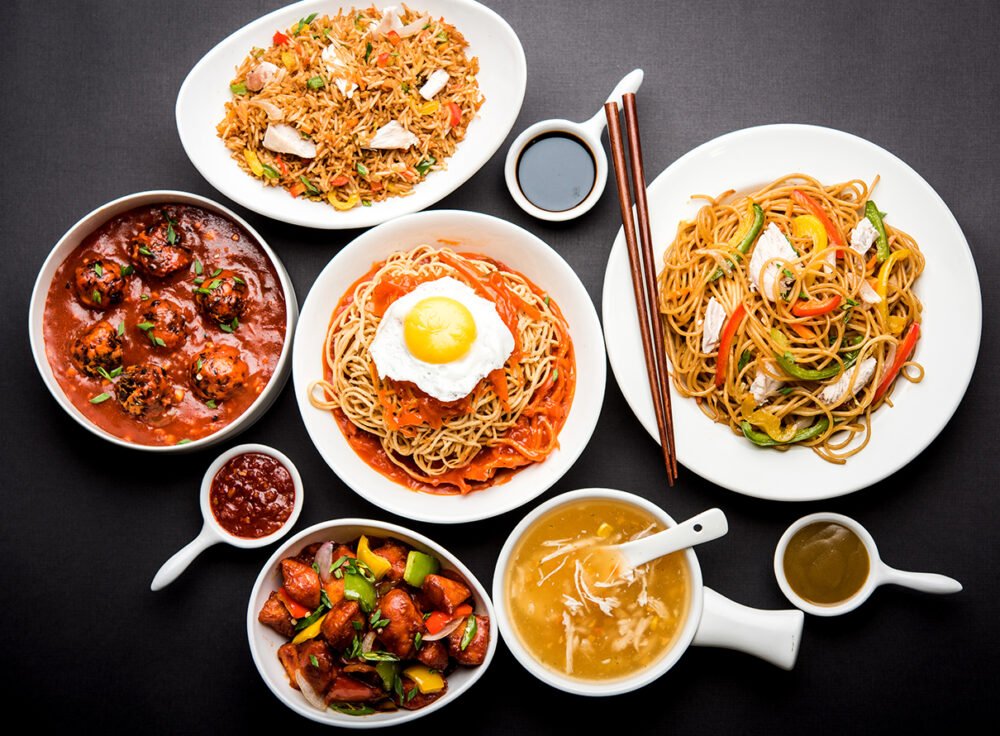India’s Chinese Food is a Feast Of Flavours – Know more!
Did you know that the actual Chinese food is quite the opposite of what you eat in India?
Yes! The Indian version of Chinese food is not only flavourful but also the most popular across the country.
The Rising popularity!
It should go without saying that Chinese food is the most widely consumed “foreign” cuisine in various regions of India. Younger Indians are becoming increasingly accustomed to the mouthwatering “Chinese” cuisine found in street vendors, dhabas, and even upscale restaurants.
Because they are a fusion of the common base ingredients in Chinese cooking with the spicy and complex flavours of Indian food, these so-called “Chinese” dishes look, smell, and taste significantly different from the western understanding of Chinese food. In order to appeal to the typical Indian taste, which is readily seduced by spicy meals, several Chinese recipes have been modified to become what is known as “Indian Chinese” or “Indo-Chinese.”
History of Indian Chinese Food!
The 18th century and Calcutta, then the capital of British India, which lies in the east of India, are where this fusion first emerged. Numerous members of the Hakka Chinese community immigrated to Calcutta from China and settled there, establishing prosperous businesses. They ran a leather tannery and a shoe store, traded silk, and were dentists. Their participation in the neighborhood helped establish India’s first Chinatown and, more importantly, laid the culinary groundwork for the country’s most popular cuisine.
The initial Hakka Chinese chefs would have understood the value of freshly ground spices in Indian food. In order to add vital Indian ingredients like chili, ginger, and garlic, as well as spices in general, they adjusted the sauces using their conventional Chinese culinary techniques. It is not typical of Chinese cuisine to employ condiments like cumin seeds, coriander seeds, and turmeric in Indo-Chinese cooking.
Restaurants offering this modified cuisine quickly proliferated throughout Calcutta and into other Indian cities and regions. The production of food with familiar flavors and sensations but served in a completely unusual way is responsible for the cuisine’s success.
Moreover, due to the ingredients’ adaptability, the huge vegetarian population could easily partake in Indo-Chinese cuisine.
According to legend, Nelson Wang, an Indian chef of Hakka heritage from China, is credited with creating the Manchurian cooking method in the 1970s. A client asked Mr. Wang, a caterer at the Cricket Club of India in Bombay, to make a dish that wasn’t on the menu. He complied and sliced up chicken into cubes, coated it in cornflour, fried it, and put it into a sauce made of garlic, ginger, and chili that was then thickened again with cornstarch and soy sauce, and vinegar. The meal was a huge success, and Mr. Wang quickly opened the China Garden restaurant in Bombay before expanding to other Indian towns.
Many Indians mistakenly believe that Indo-Chinese food is the real deal. They are frequently startled (and perhaps disappointed) when they try ‘real’ Chinese food, which is typically healthier, occasionally bland, and typically meat-focused.
The Indian diaspora has acknowledged the appeal of this distinctive hybrid cuisine, and substantial Indian communities outside of India have access to Indo-Chinese food. This is made possible by the demand of homesick Indians who have moved overseas and yearn for the spice and simplicity of their preferred “foreign” food.
With the development of foods like Schezwan dosa, spicy idli, and Chinese bhel, cuisine fusion is still evolving today. This demonstrates both the popularity of Indo-Chinese food and its capacity to meld with a regional flare.
No wonder Hakka noodles are one of the most popular dishes in India. It is the simplest and quickest preparation of all. From veggies to meat, you can add a variety of things to it. WTR has a delicious recipe up on their channel, so if you are planning to cook tonight, then check that out!
Happy Cooking!






